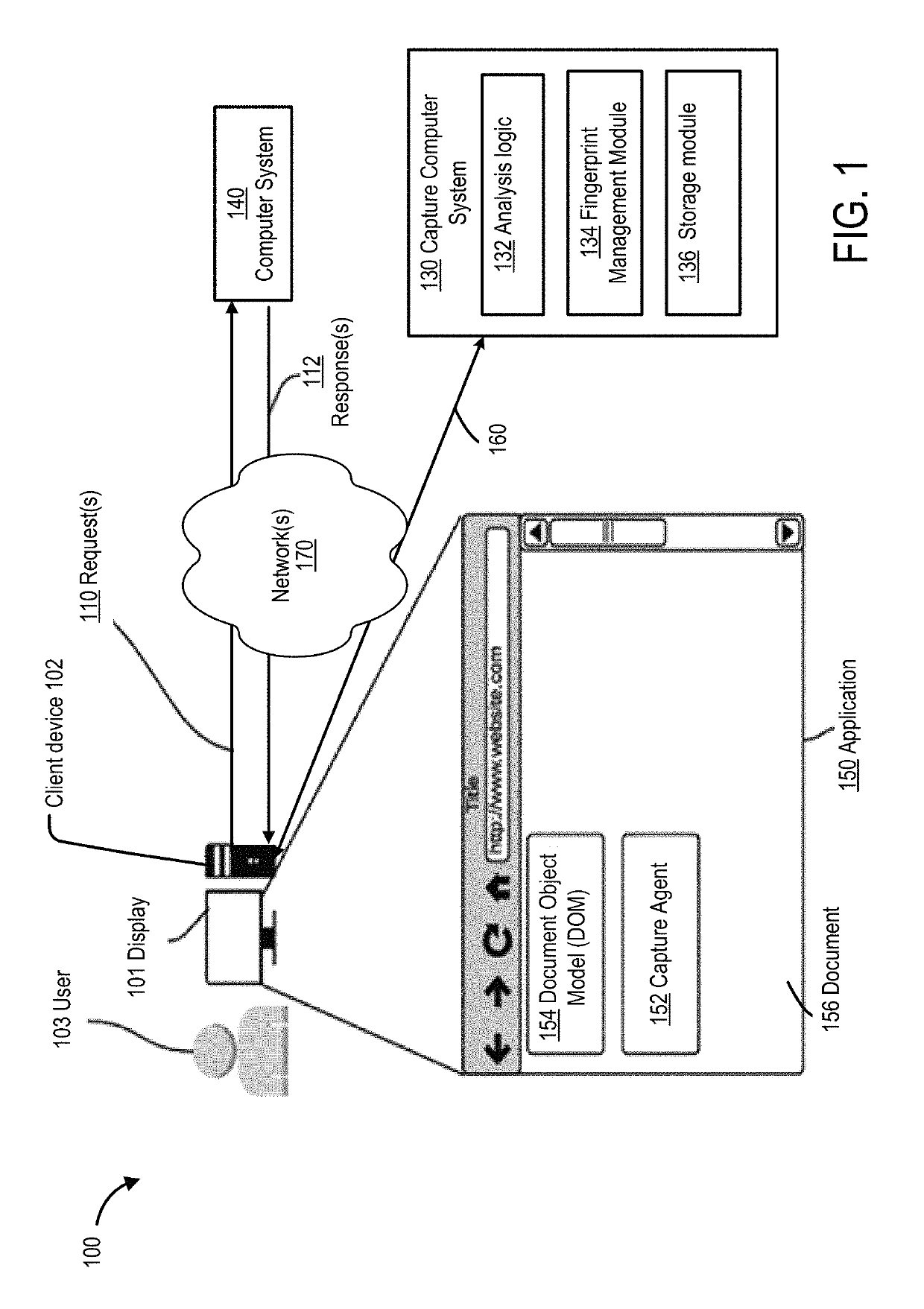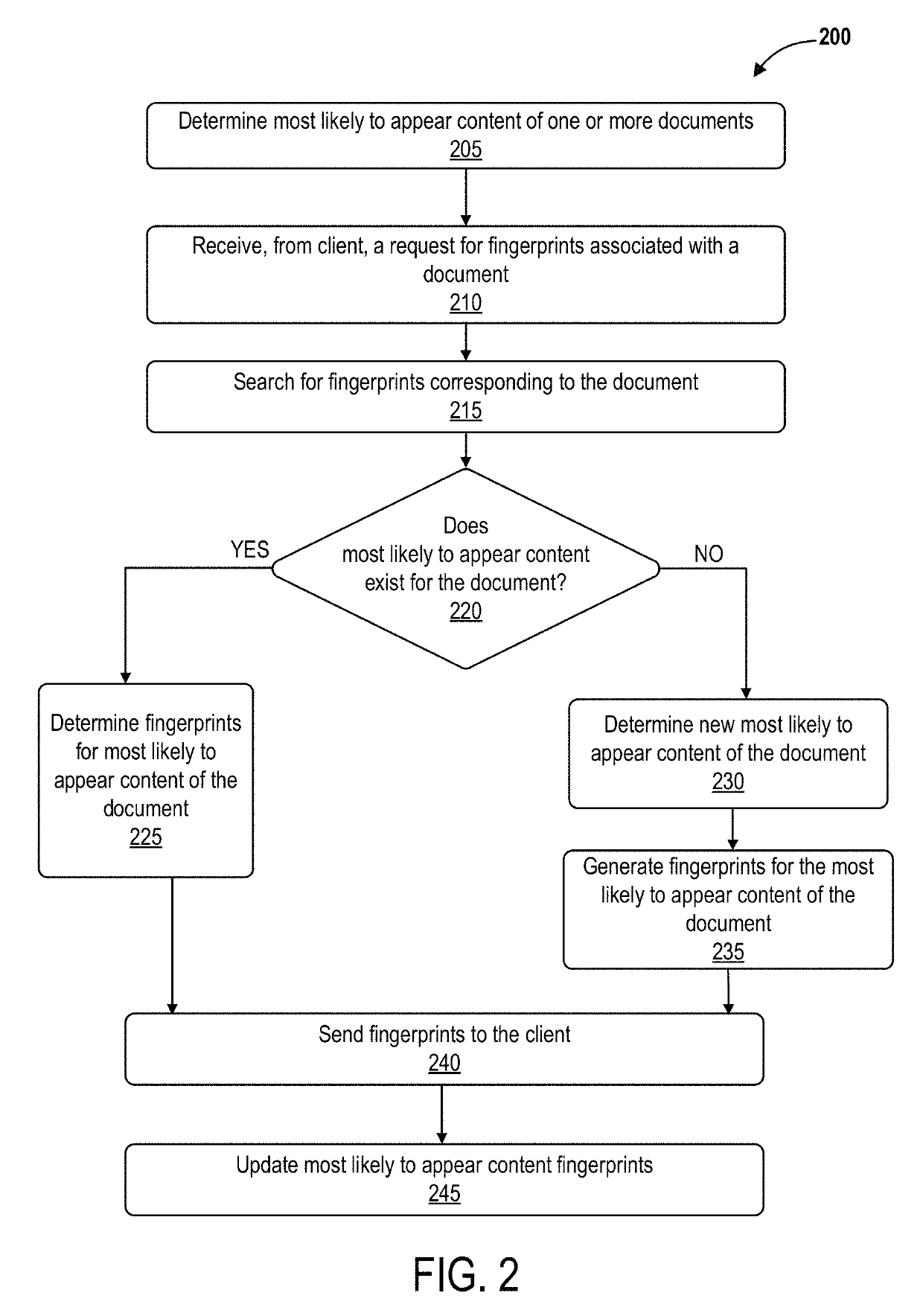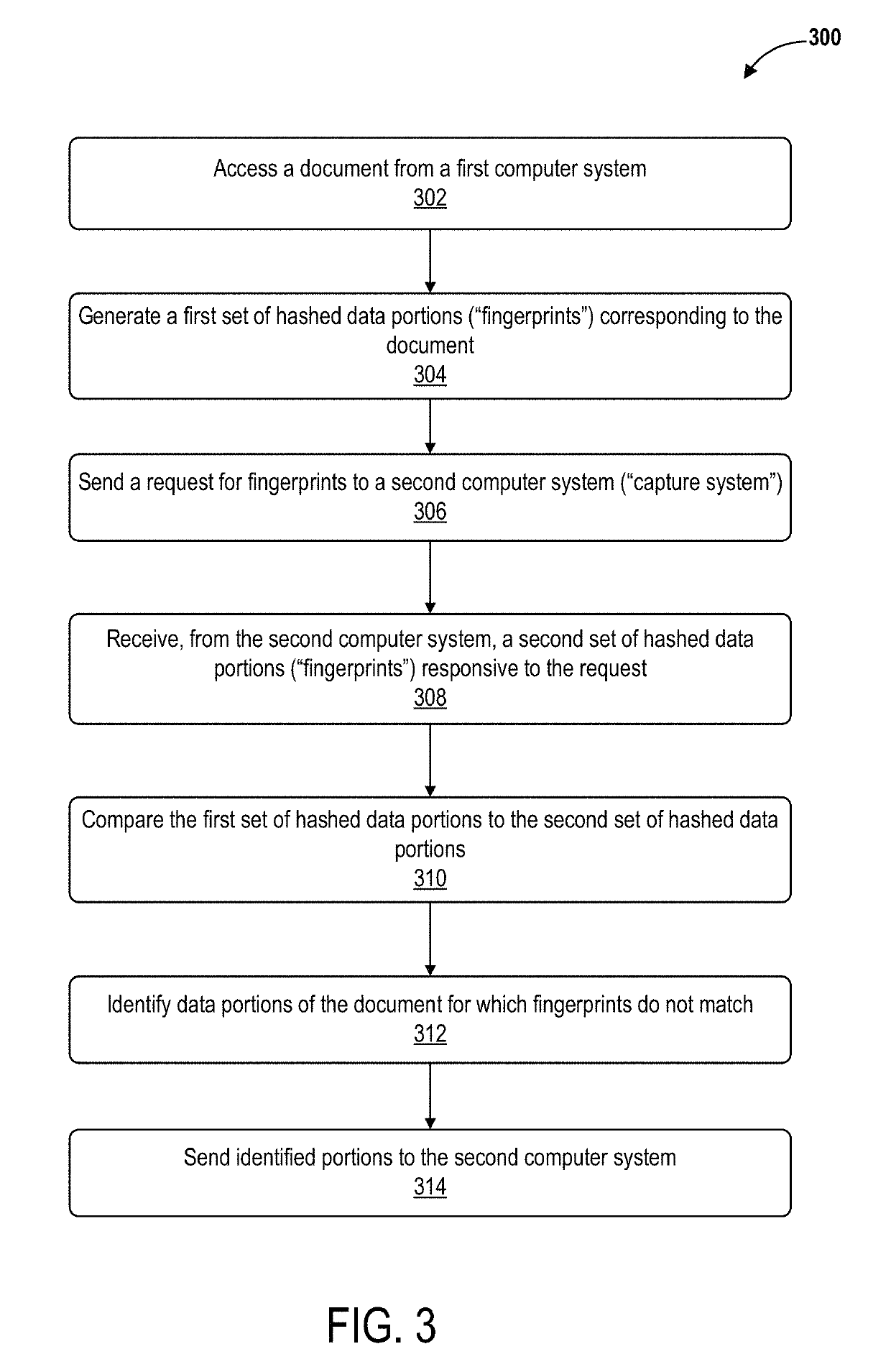Document capture using client-based delta encoding with server
a document capture and client-based technology, applied in the field of document capture systems, can solve the problem of limited amount of data that can be used to recreate, and achieve the effect of reducing the amount of data, reducing the time and processing resources required, and reducing the need for client data storag
- Summary
- Abstract
- Description
- Claims
- Application Information
AI Technical Summary
Benefits of technology
Problems solved by technology
Method used
Image
Examples
Embodiment Construction
[0037]Methods and systems for compact data storage of client-side modifications to a document (e.g. a web document) are described. Embodiments are directed to sending, from a client device to a web server, modified sections of the document using delta encoding. In various embodiments, the client compares client-generated fingerprints for the document with capture server-generated fingerprints for most likely appearing portions of the document or related documents to fully represent and send to the capture server the client document in a compact and efficient way. Specifically, embodiments pick the most statistically likely to appear content, i.e. content such as text chunks that clients have returned most often. In some cases, the capture-server could base the decision off of, for example, the language in the request headers. So for English language users, embodiments return one set of fingerprints for chunks, and for Italian language users, embodiments return a different set. It is...
PUM
 Login to View More
Login to View More Abstract
Description
Claims
Application Information
 Login to View More
Login to View More - R&D
- Intellectual Property
- Life Sciences
- Materials
- Tech Scout
- Unparalleled Data Quality
- Higher Quality Content
- 60% Fewer Hallucinations
Browse by: Latest US Patents, China's latest patents, Technical Efficacy Thesaurus, Application Domain, Technology Topic, Popular Technical Reports.
© 2025 PatSnap. All rights reserved.Legal|Privacy policy|Modern Slavery Act Transparency Statement|Sitemap|About US| Contact US: help@patsnap.com



